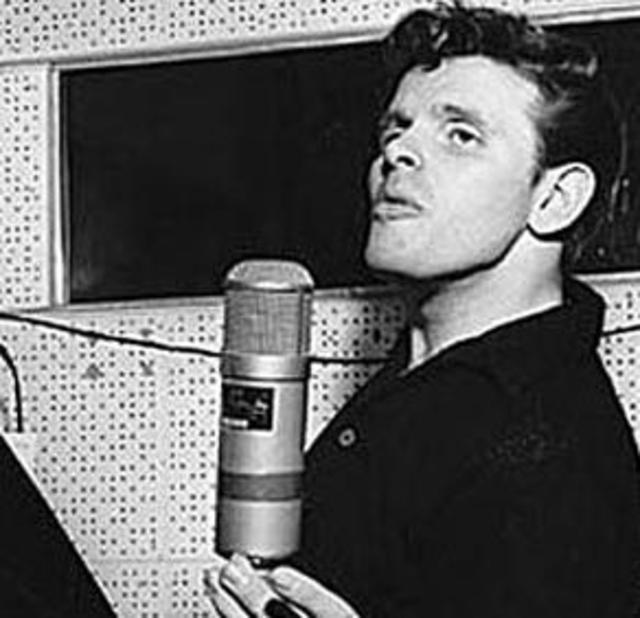Del Shannon

Inductee: Del Shannon (vocals, guitar; born December 30, 1934; died February 8, 1990)Del Shannon is a key figure in rock and roll's transition from the Fifties to Sixties, serving as something of a link between Elvis Presley and the Beatles. He was among the relatively few self-reliant rock and rollers of the Teen Idol era. He wrote his own material, played guitar and sang, and did not project a manufactured image. Shannon turned out a solid run of hits during the first half of the Sixties, including one bonafide classic ("Runaway") and seven more Top 40 singles. He also gave and received influence from the up-and-coming bands of the British Invasion, including the Beatles.Shannon was born Charles Westover in Coopersville, Michigan. An early fan of Hank Williams, Shannon picked up the guitar in his pre-teen years. By the time he was 14, he was playing at school shows. "His guitar was his crutch," said Russell Conran, his high-school principal. "Charles played his guitar everywhere he went, at football games, in the hallways, at noon hour, everywhere."After high school, Shannon served in the army in Germany. He then returned home and formed his first band, the Midnight Ramblers. He took his stage name from a friend, Mark Shannon, and his boss' car, a Cadillac Coupe de Ville. The Ramblers became regulars at the Hi-Lo Club in Battle Creek, Michigan. In early 1960, a deejay from local station WHRV caught one of the shows and arranged for an audition with Detroit's Big Top Records. The label signed Shannon and sent him to New York to record some songs. The initial sessions did not yield much, but he was sent back to New York for another session. He wound up recording what became his first and most famous hit, "Runaway." This minor-keyed classic from 1961 – which occupied the Number One spot for four weeks and has been covered by more than 200 artists – possessed two distinctive qualities that became signatures of Shannon's sound: his frequent use of a forceful falsetto and bandmate/cowriter Max Crook's solo on the "musitron," a high-pitched electric organ. "Runaway" made an overnight star of Shannon, who suddenly found himself performing on package tours with the likes of Jackie Wilson and Dion.Shannon followed "Runaway" with pop-rockers like "Hats Off to Larry," which reached Number Five; "So Long Baby," which made it to Number 28; "Hey! Little Girl," which hit Number 38, and "Little Town Flirt," which went to Number 12 and influenced Britain's Merseybeat bands. He also recorded inspired covers of "Handy Man" and "Do You Wanna Dance." Shannon did his first tour of England in 1962, and he returned the following year. On that second trip, he met the Beatles and shared a bill with them at London's Royal Albert Hall on April 18, 1963. Later that year, he recorded a cover of "From Me to You," making him the first American artist to record and chart a Lennon-McCartney tune in the U.S. Shannon's version of "From Me to You" reached Number 77 on the Billboard chart in the summer of 1963 – fully half a year before the Beatles' own American chart debut with "I Want to Hold Your Hand." Two years later, the British pop duo Peter and Gordon scored a Top 10 hit with Shannon's "I Go to Pieces," which they learned from him while touring Australia in early 1965.Two more chart singles – "Keep Searchin' (We'll Follow the Sun)" and "Stranger in Town" – came in 1964. Each bore a haunted, minor-key aura that was Shannon's unmistakable signature – and perhaps symptomatic of the depression that would trouble him throughout his life. Shannon's career cooled off as musical tastes changed in the latter half of the Sixties. In 1967, he recorded with the Rolling Stones' producer, Andrew Loog Oldham, but the material was deemed too progressive by his record label and went unreleased for decades until its inclusion on a 1991 compilation CD, Del Shannon: The Liberty Years. Nicky Hopkins and John Paul Jones played on those sessions.In 1969, Shannon began focusing more of his attention on production, setting up his own independent company. He arranged the group Smith's 1969 hit "Baby, It's You," and the following year Shannon cut a hit single, "Gypsy Woman," for Brian Hyland. Shannon also continued touring, performing frequently in England, where he remained very popular.With assistance from fans and fellow musicians like Jeff Lynne, Dave Edmunds and Tom Petty, Shannon recorded sporadically in the Seventies and Eighties. In 1974, Edmunds produced "And the Music Plays On" for Shannon. And in 1975, Shannon released a version of the Zombies' "Tell Her No." During the middle part of that decade, Shannon was suffering from bouts of alcoholism. Then, in 1981, he teamed up with Petty, who produced the album Drop Down and Get Me, which yielded a Top 40 hit – Shannon's first since 1965 – with his cover of Phil Phillips' "Sea of Love." "I'd heard of Tom Petty," Shannon said at the time. "I just hadn't heard him. When I wasn't hot, I avoided anyone who was hot."During the rest of the Eighties, Shannon remained active as a performer. After working steadily on the oldies circuit, he recorded Rock On!, with musical accompaniment by Petty and the Heartbreakers, among others. On February 8, 1990, when the album was almost completed, Shannon – who'd suffered bouts of depression and alcoholism dating back to the Sixties – committed suicide by shooting himself in the head with a .22-caliber rifle. As a tribute to Shannon, the Traveling Wilburys, which included Lynne and Petty as members, recorded a version of "Runaway." Rock On! was released in 1991.